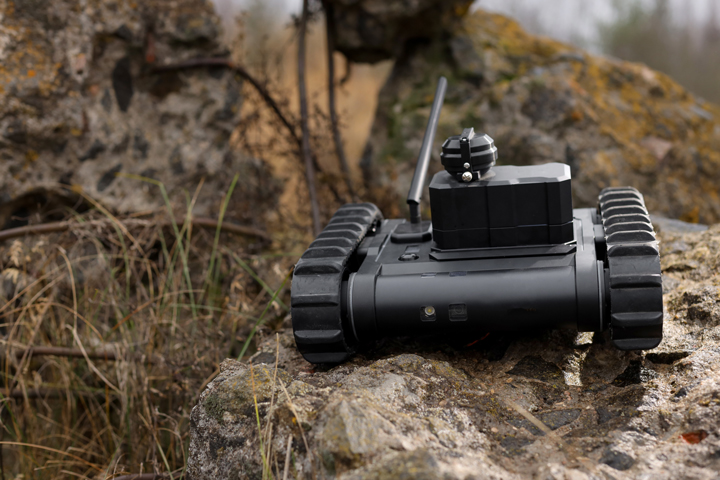The conversations and key takeaways in Defence AI and Robotics at DSEI UK 2025
Date Posted: Thu, 18 Sep 2025
I spent most of my time at DSEI last week following those firms operating in the AI and robotics realm, looking at where software stacks are maturing and where the interesting platforms are coming from. These are the companies and the tech that stood out.
PhysicsX
They’re building a platform that combines physics-based simulation with generative models and real-world data inputs. Their demo made it clear how far this could reach, even beyond defence, with use cases across clean tech, automotive, semiconductor manufacturing, and any domain where scaling complex systems is difficult.
Their offering isn’t positioned as an R&D tool that sits in isolation, but a platform designed to be a hub for engineers to run experiments, draw on live data and tighten the loop between design and test.
What I’d love to see next is how their models handle the gap between simulation and deployment in the field, because that’s the sticking point for most platforms. They raised a Series B earlier this year, led by Atomico, so the resources are there for them to keep pushing at this.
For teams adopting their platform, the real demand will be for simulation engineers who also understand ML methods, people who can validate results against often messy real world data.
XRC Robotics
Founder Cam Knighton has put together a lean but ambitious team, and their presence at DSEI showed that clearly.
They have three products, including the Rhino tracked UGV, which they had on show there as the newest. It’s fast, rugged, and the hardware design is strong. I had a chance to look closely at the build and try one of their smaller robots, which gave a sense of the engineering priorities they’re working to. I was pretty terrible at navigating this smaller bot, the Microtraxx, through the course they set up. Cam stepped in and totally showed me up – as he should, being the founder!
The Rhino’s performance specs position it as a serious mobility platform. What will define its future is the software layer, the autonomy, sensor integration, secure comms, and how the system is validated in the field.
For a company as lean as XRC Robotics are at the moment, the next stage will be building capability in control systems, embedded engineering and systems integration so that deployments continue to demonstrate their ability to hold up in complex environments.
Shield AI
Shield AI already has a ton of traction in the US, with Hivemind in use by SOCOM, the Air Force and Navy. They were at DSEI showcasing their stack, having only recently opened up their new London office from which they expect to expand significantly.
What they showed in London wasn’t a proof of concept like some stalls, but a stack that’s already being integrated into live systems, from loitering munitions to unmanned aircraft. Seeing that transition from research-heavy autonomy to deployed, operational software is important.
The challenge now is furthering their commercial efforts and further showcasing reliability under constraints and certifiable in defence settings. Their stage creates strong demand for engineers who understand both perception and systems integration, especially those who’ve worked with ROS2, safety-critical software and multi-sensor fusion.
Anduril
Anduril’s team spoke about their pace of growth and the way they position themselves as a tech-first company; one that acts with more agility and with a more forward-thinking nature than you might expect compared to more traditional defence firms.
Their UK operation is scaling, and what they showed at DSEI reinforced that they’re not approaching this like a traditional prime contractor. The emphasis is on building platforms that combine hardware with the type of iterative software delivery we see in tech companies.
For me the interesting thing is not a specific product line but the shift in expectations, if primes adopt this tech-first mentality, CI/CD pipelines, telemetry and observability could become part of the baseline in defence projects rather than extras thought about afterwards.
Takeaways
Across all of these companies the signals are similar. Simulation platforms are moving closer to real-world deployment. Hardware startups are building credible UGVs but will be defined by the maturity of their autonomy stacks.
Established autonomy firms are proving that operational integration is no longer theoretical and the larger players are showing that tech-first culture is gaining ground in defence.
For anyone watching this market, this displays some interesting hiring signals. Demand is growing for hybrid engineers who can move between classical mechanical or electrical work and modern autonomy stacks, and systems integration, simulation-to-field validation, MLOps for edge devices and procurement-savvy programme management will be the roles that drive delivery over the next cycle.
Written By:

